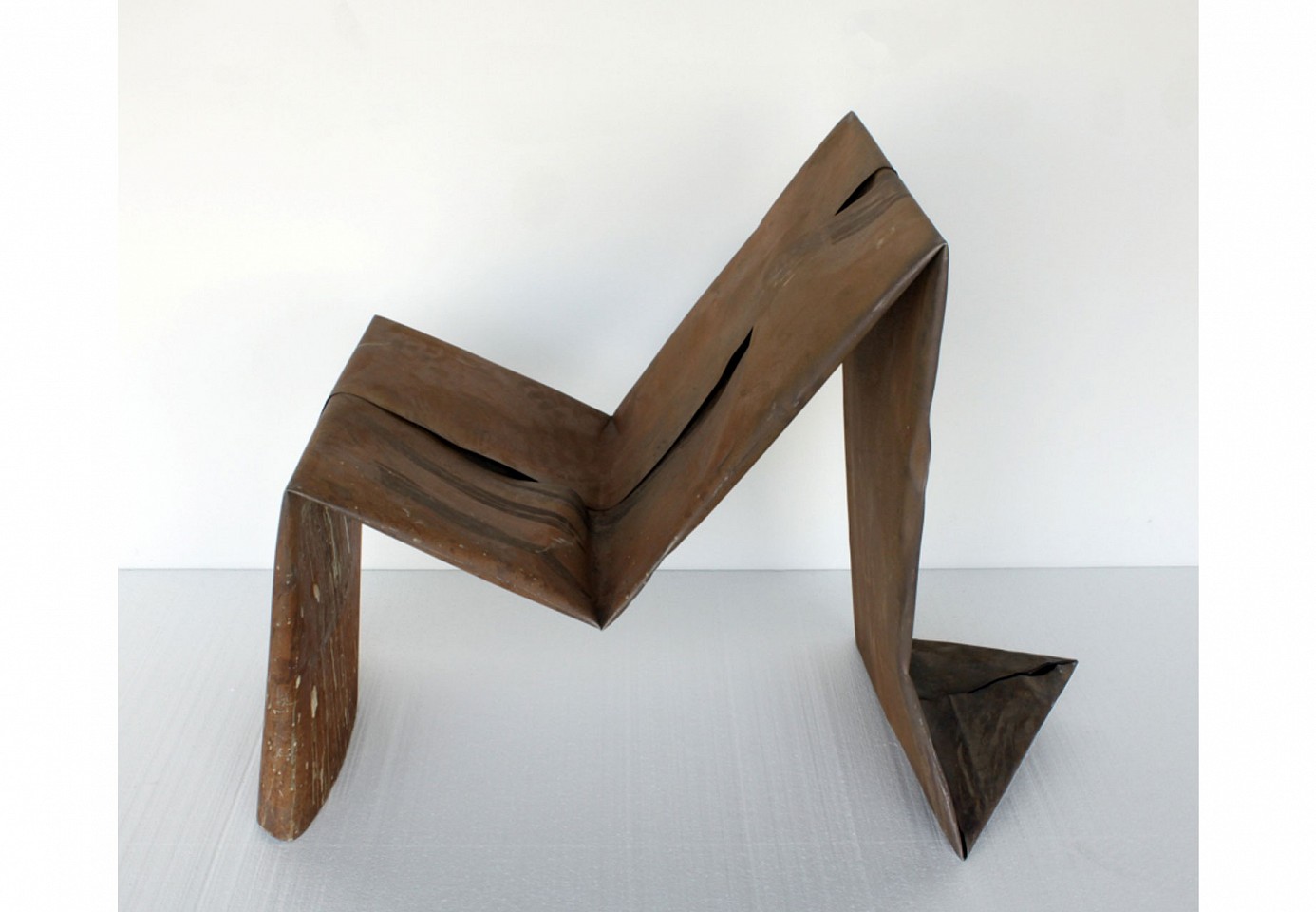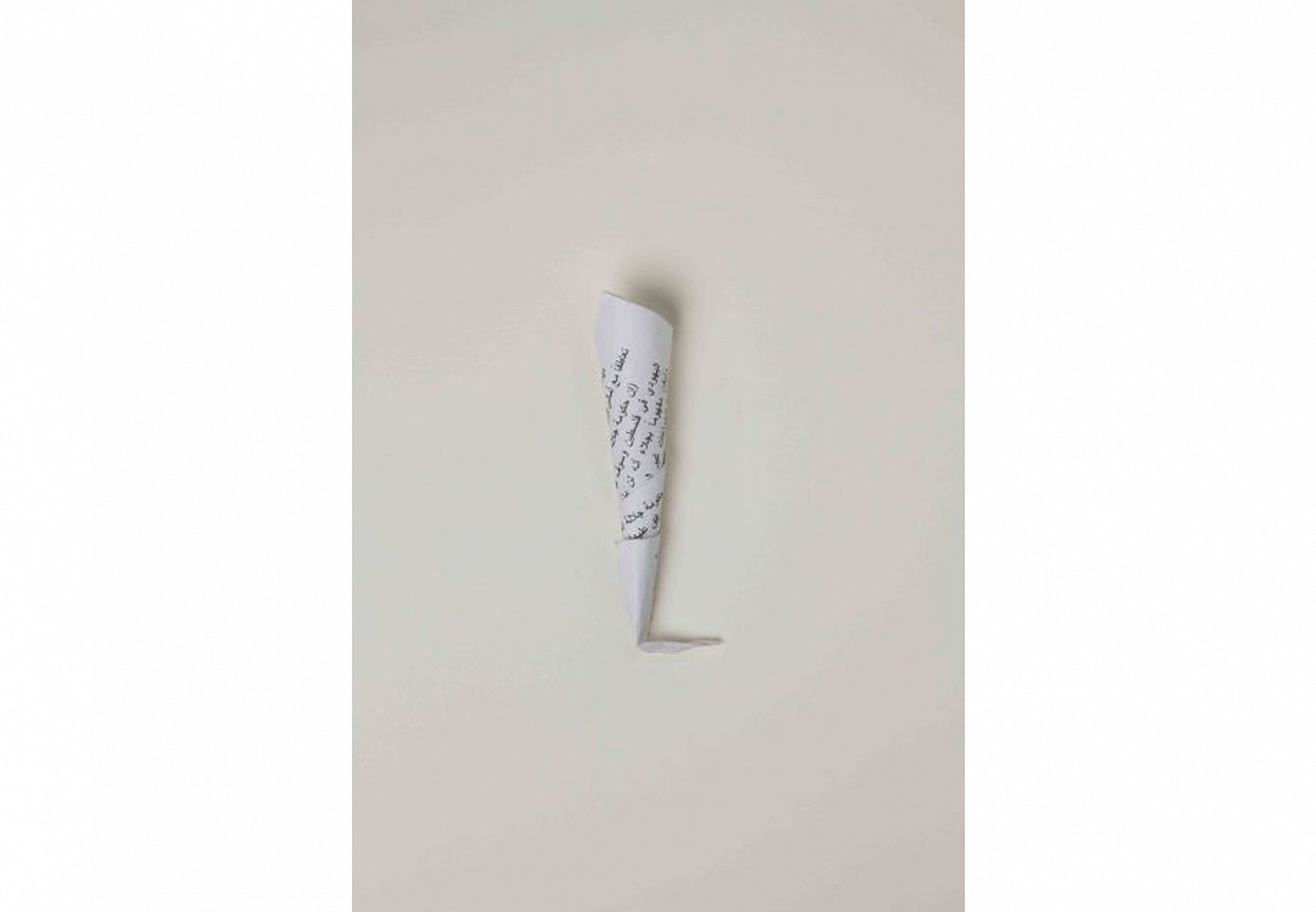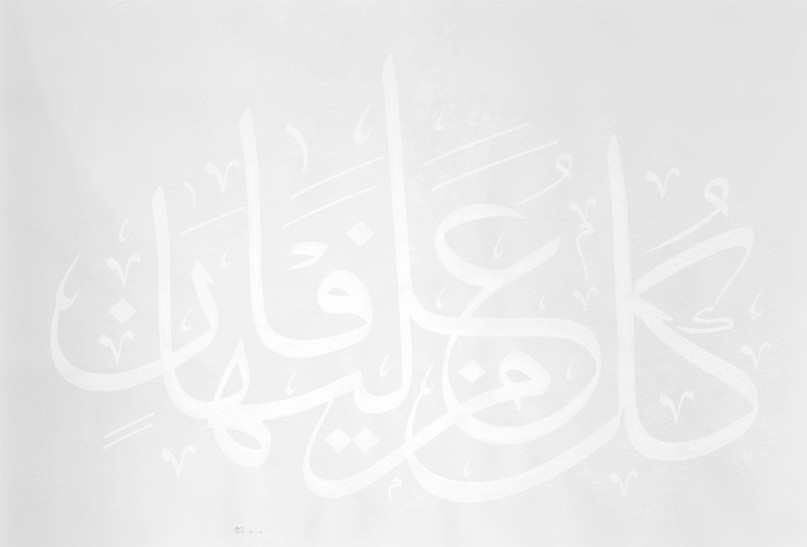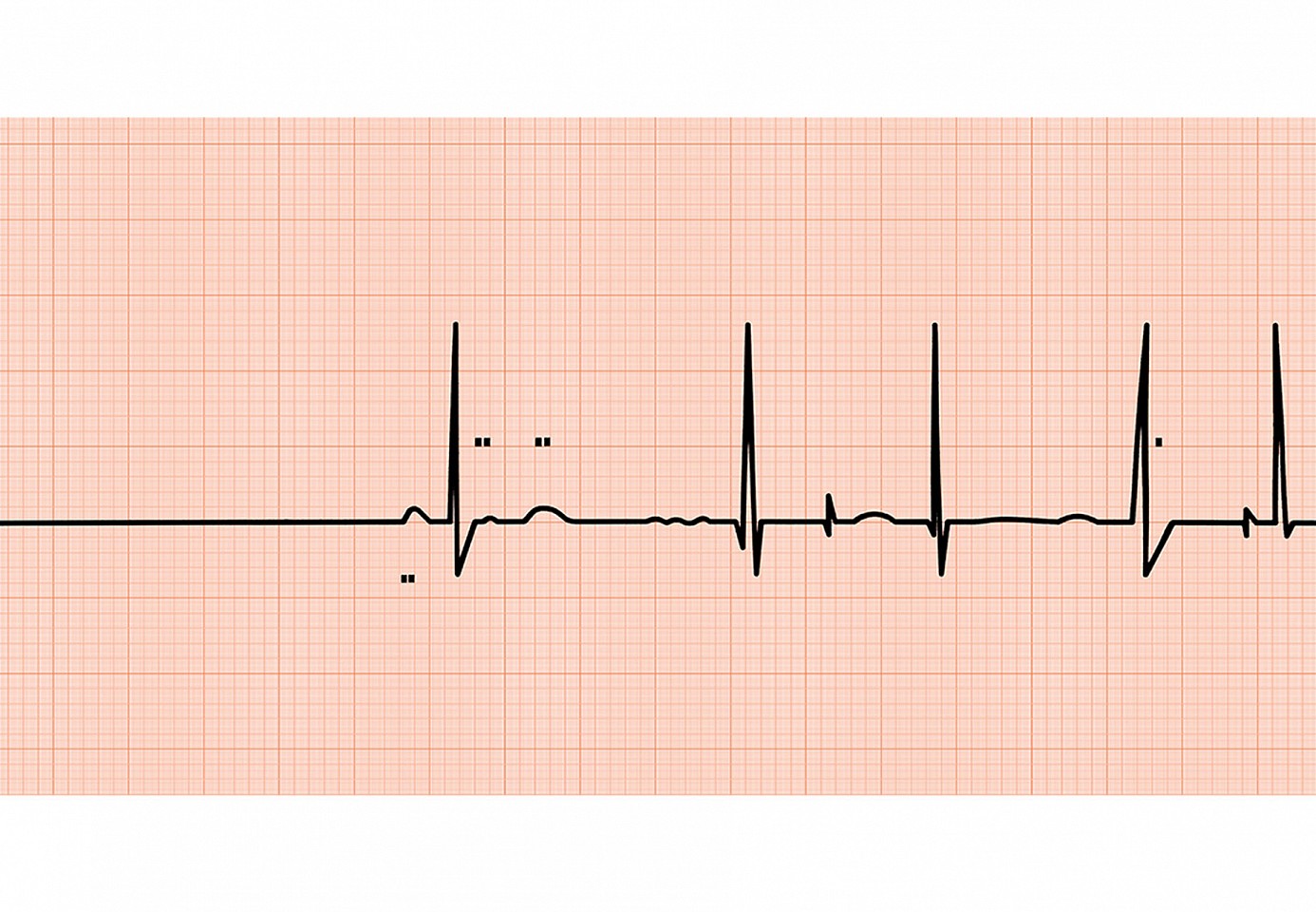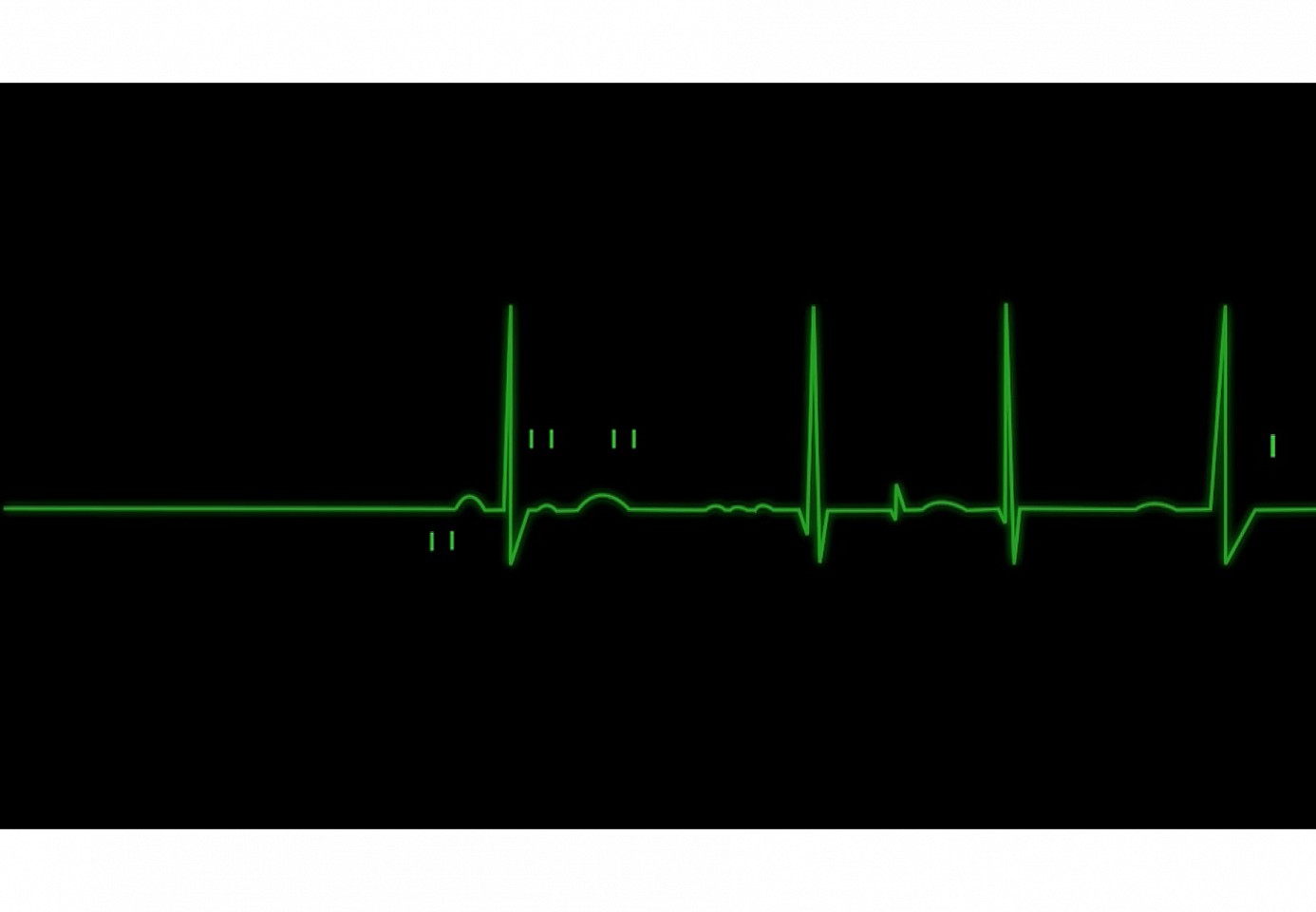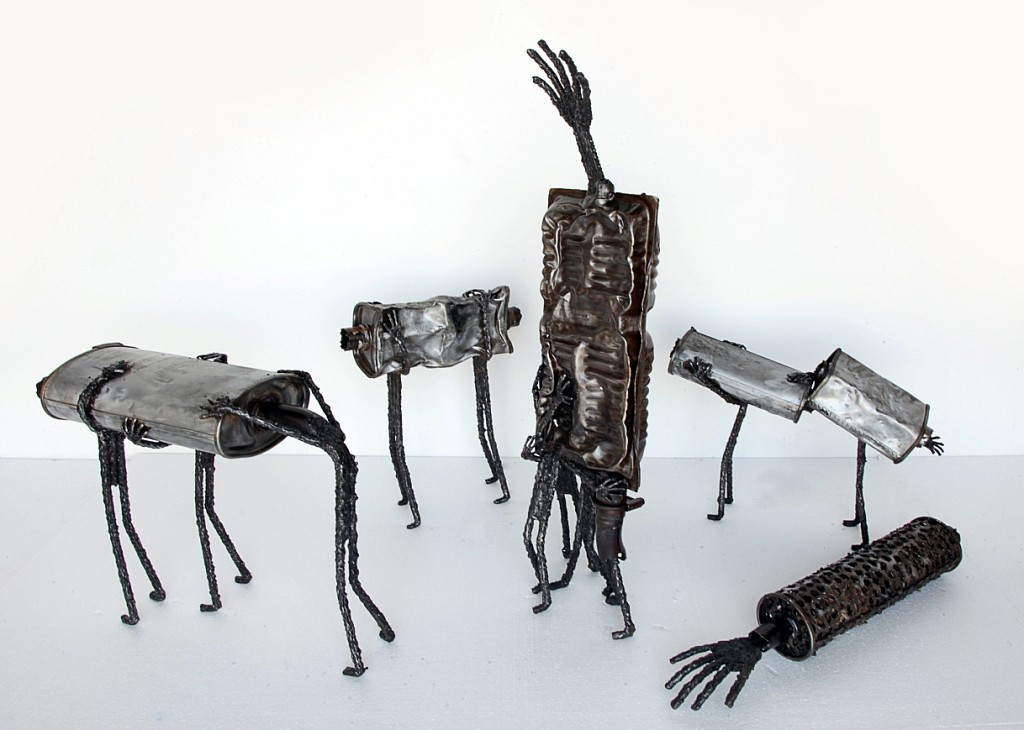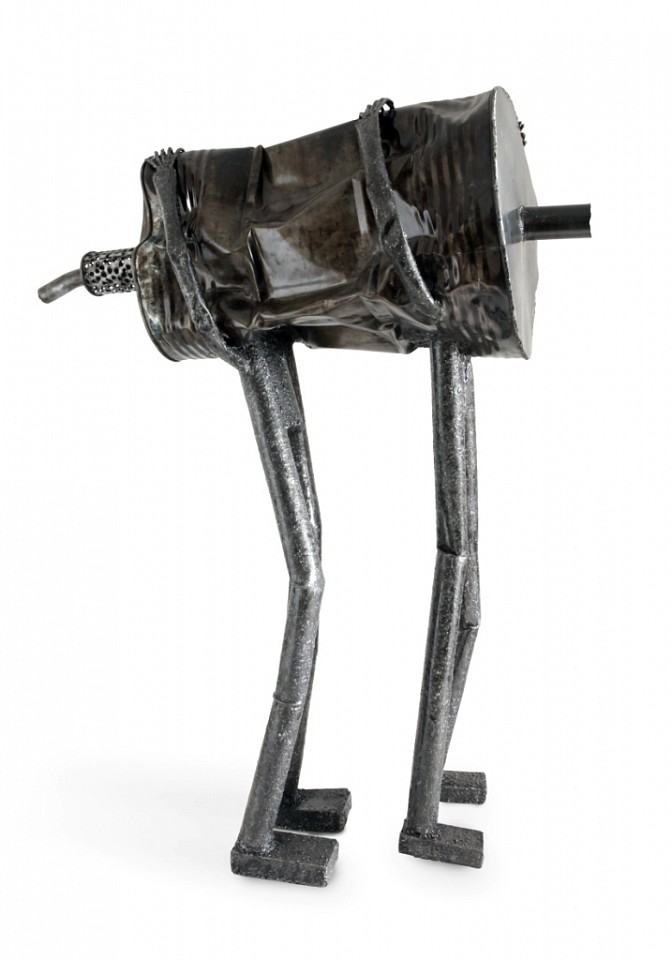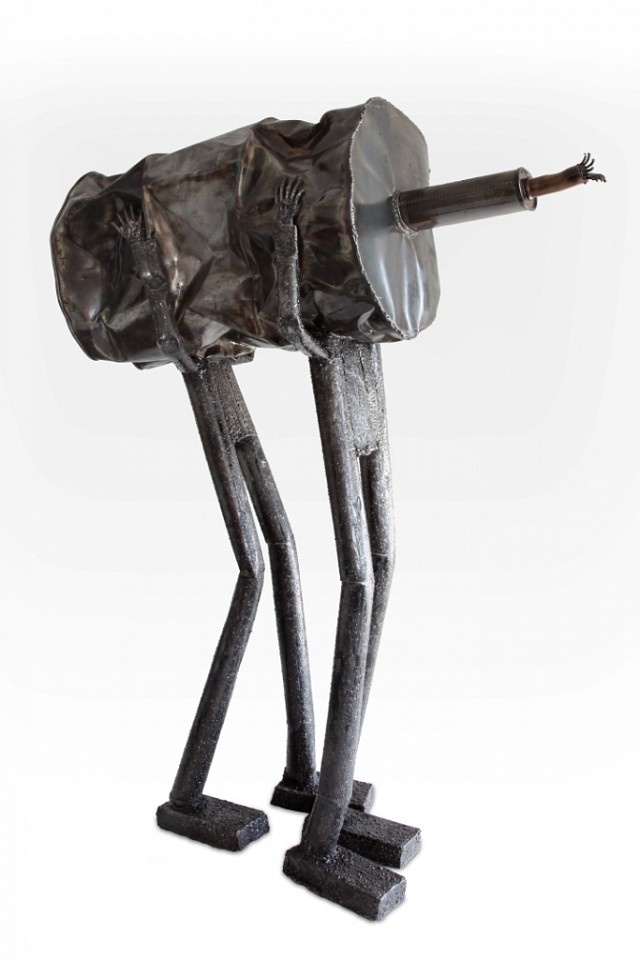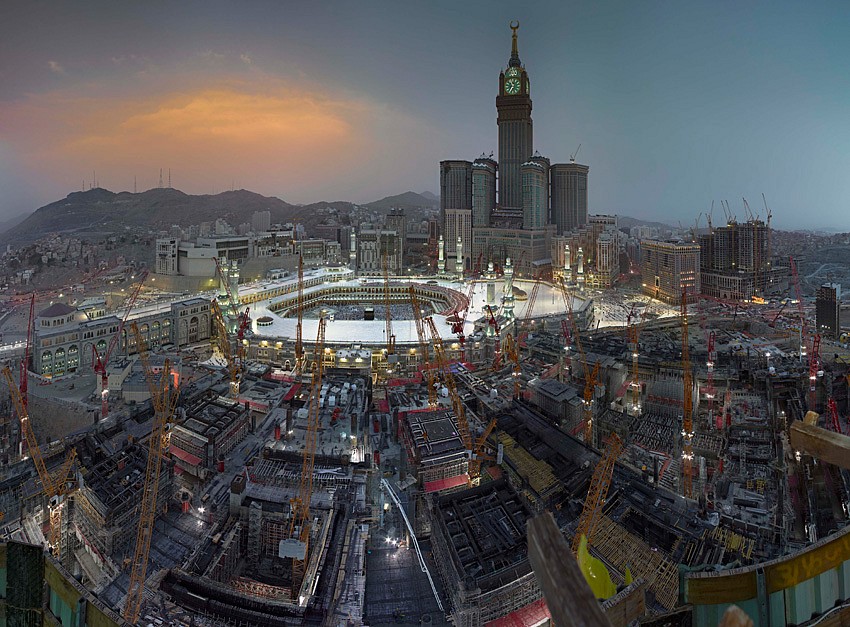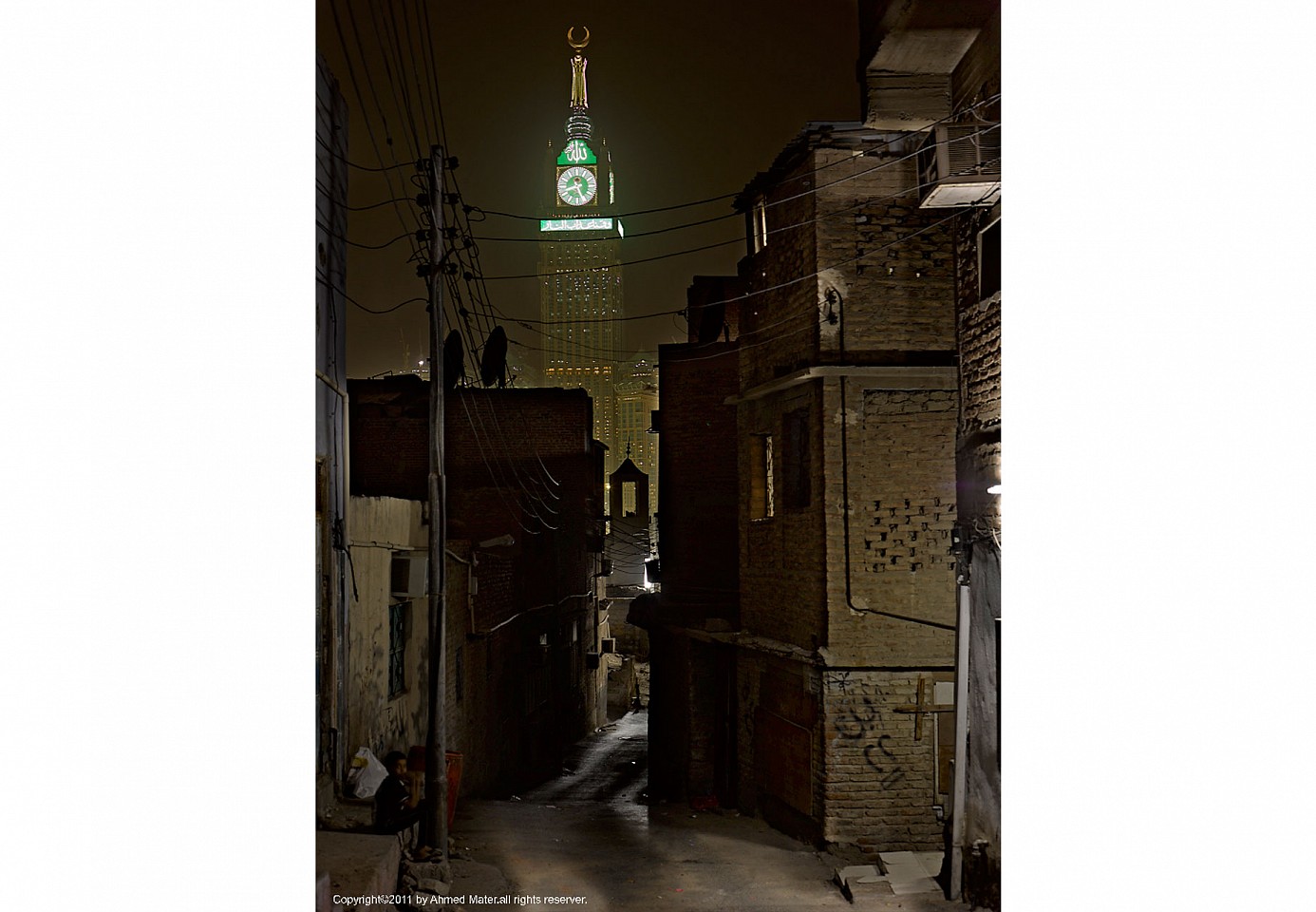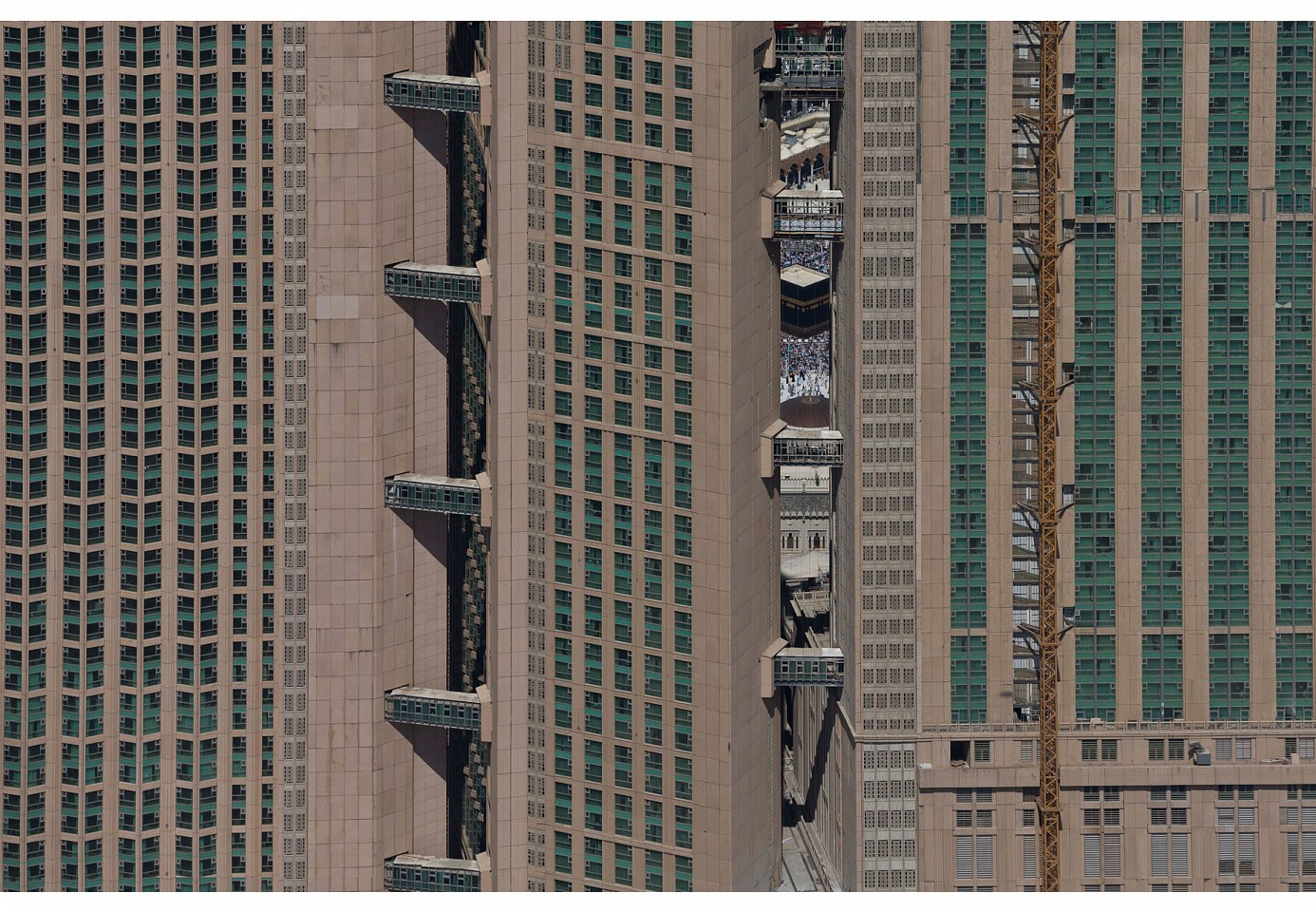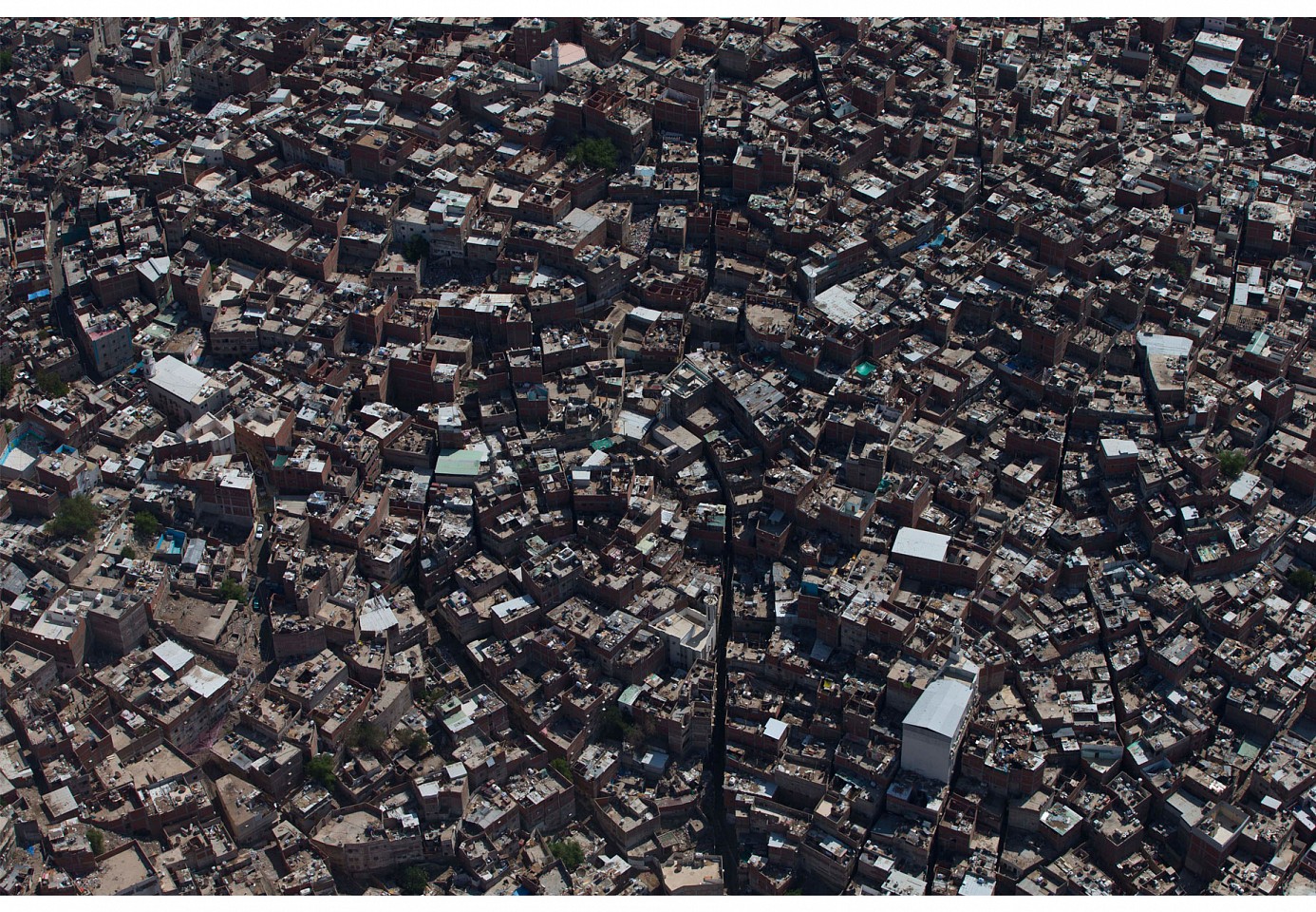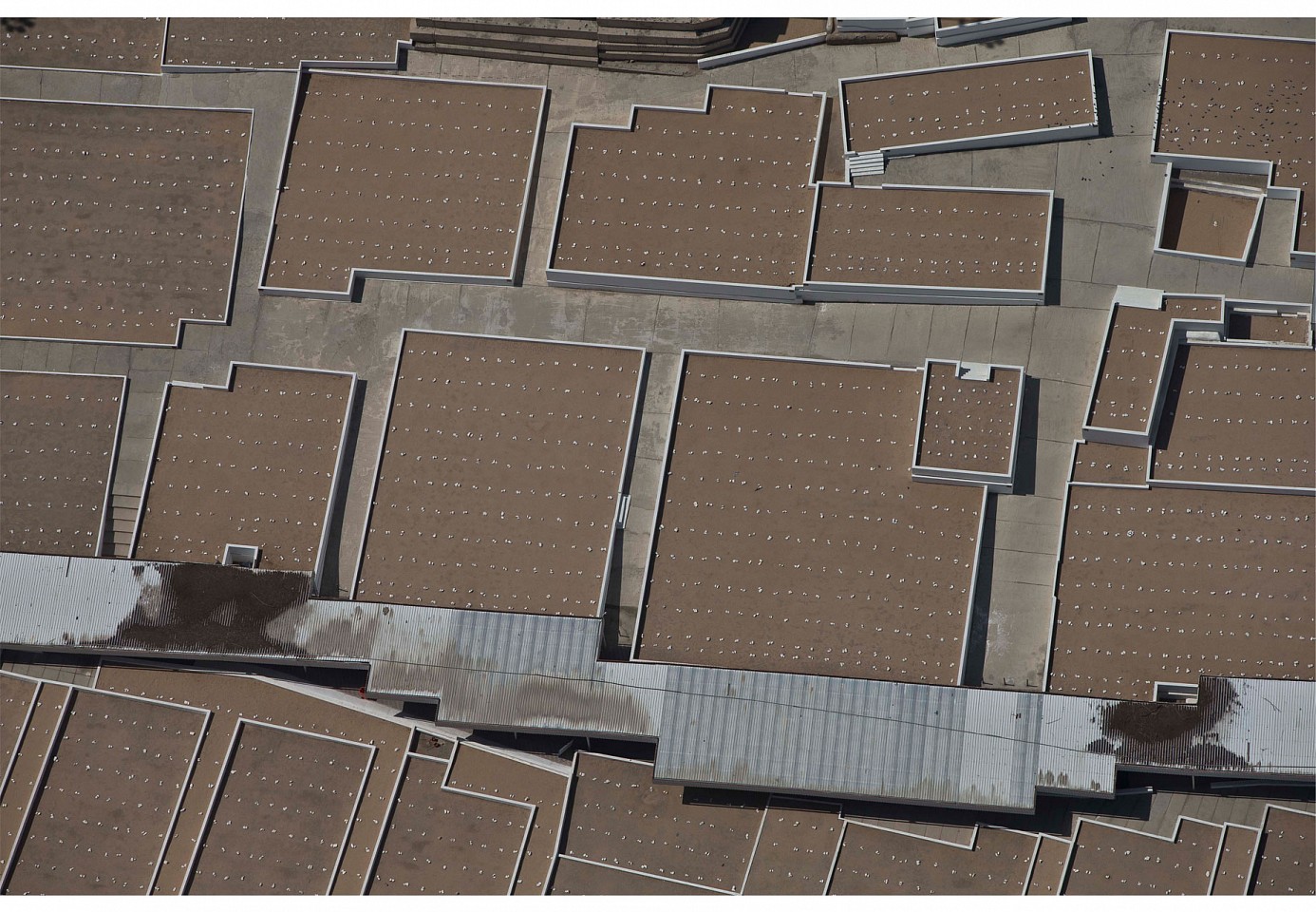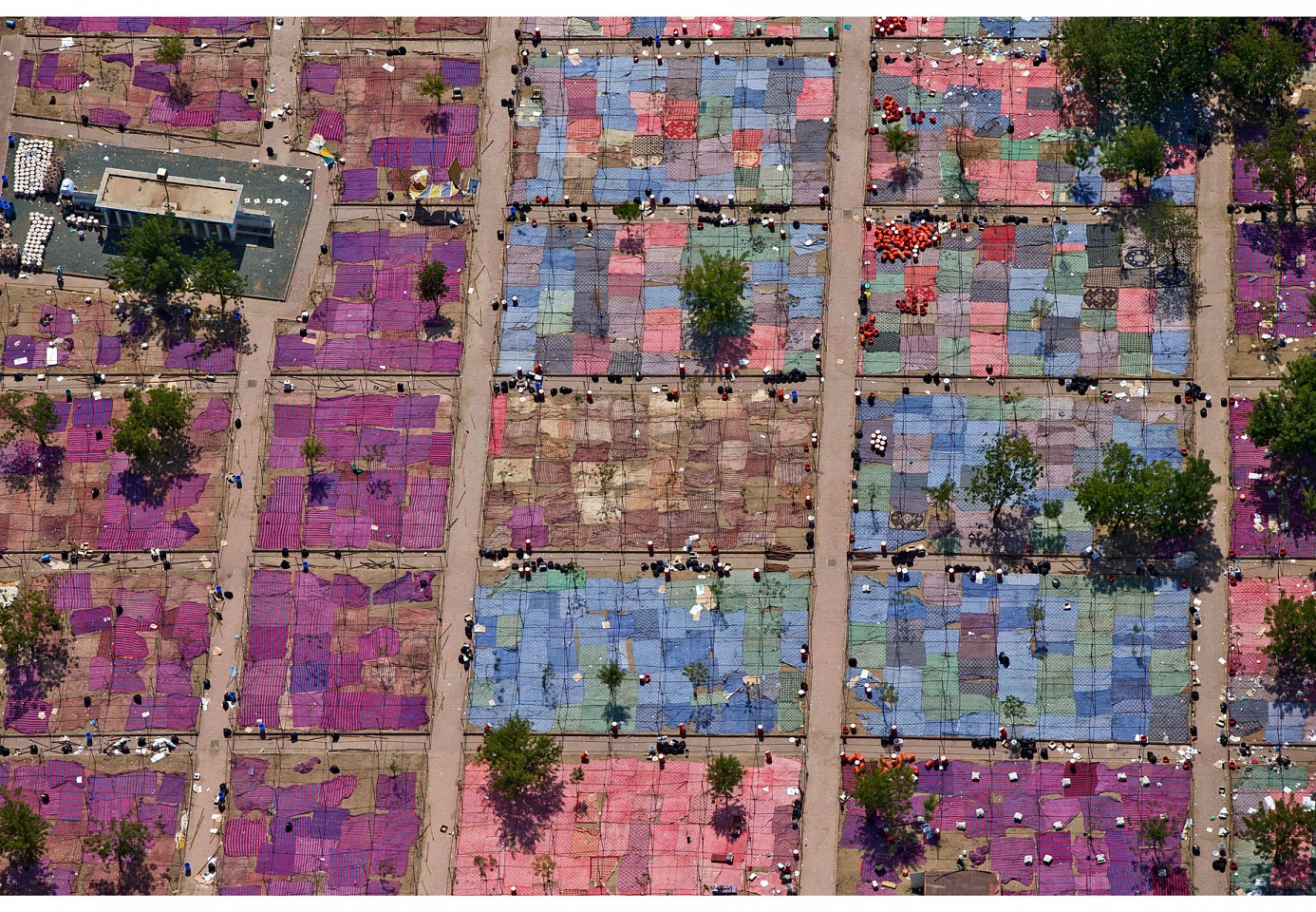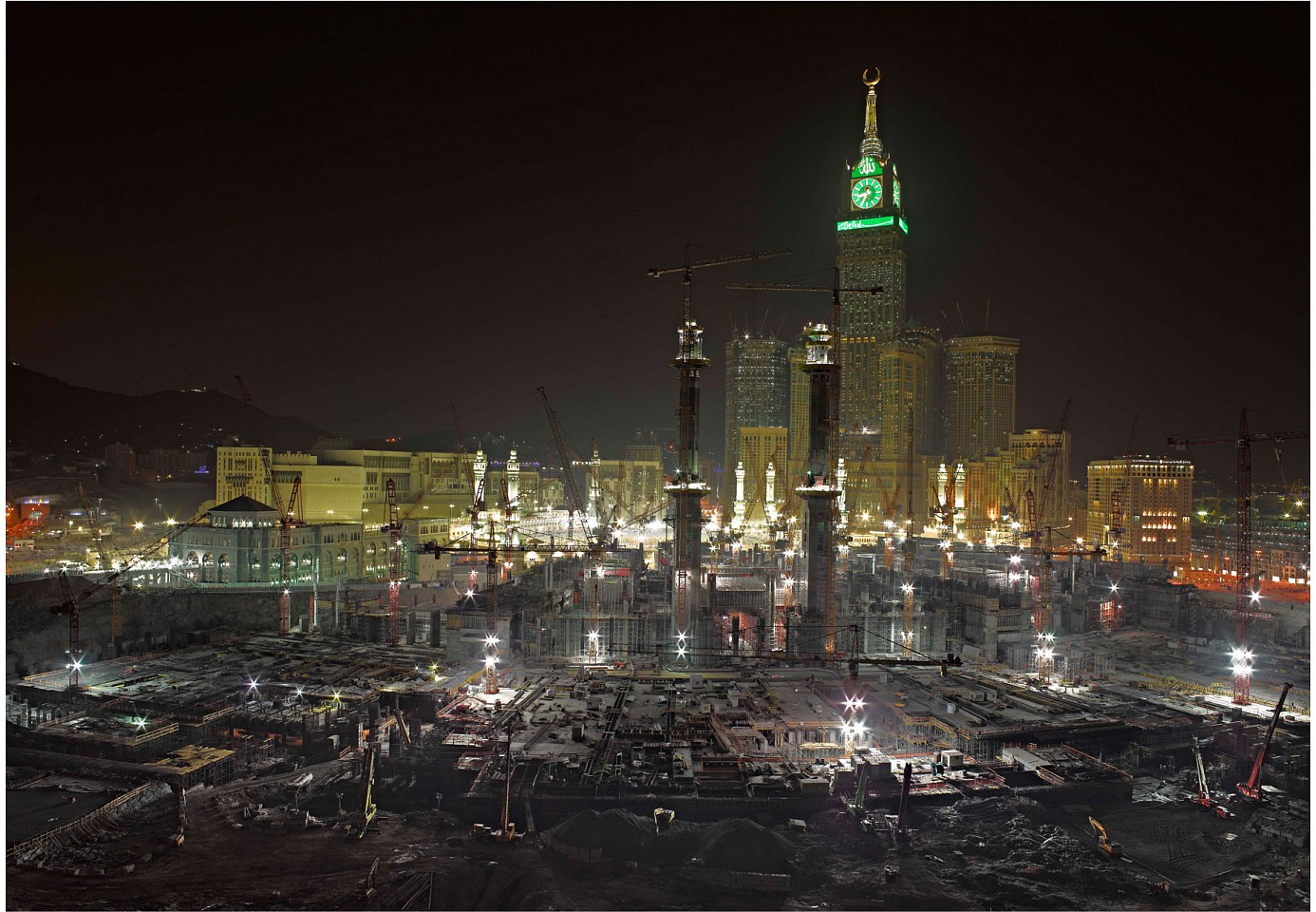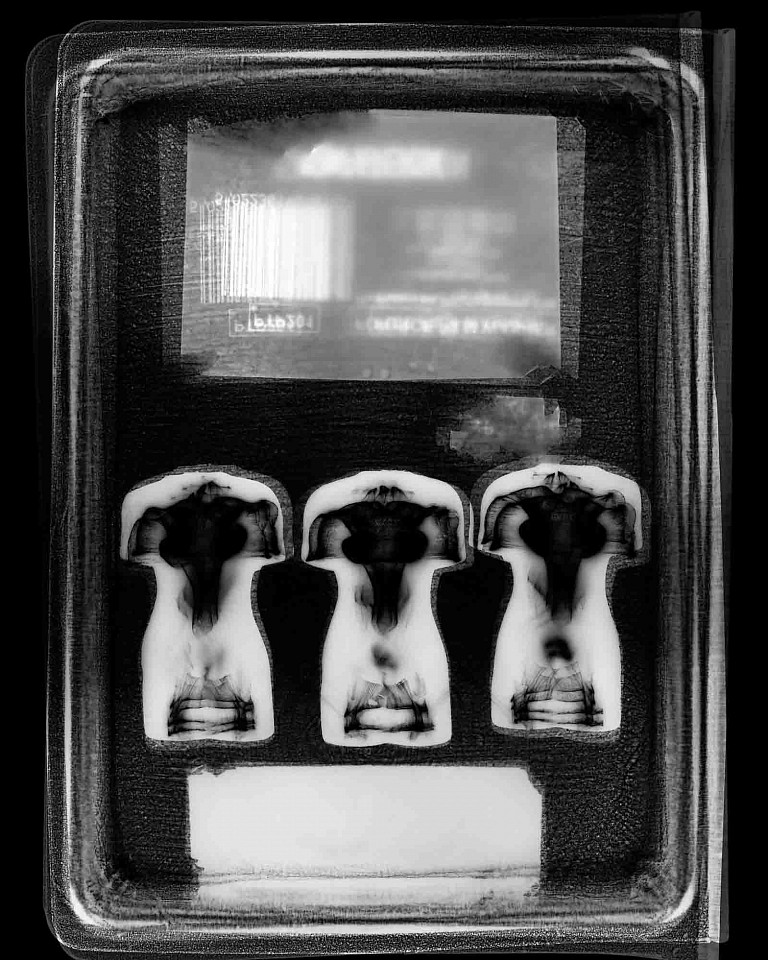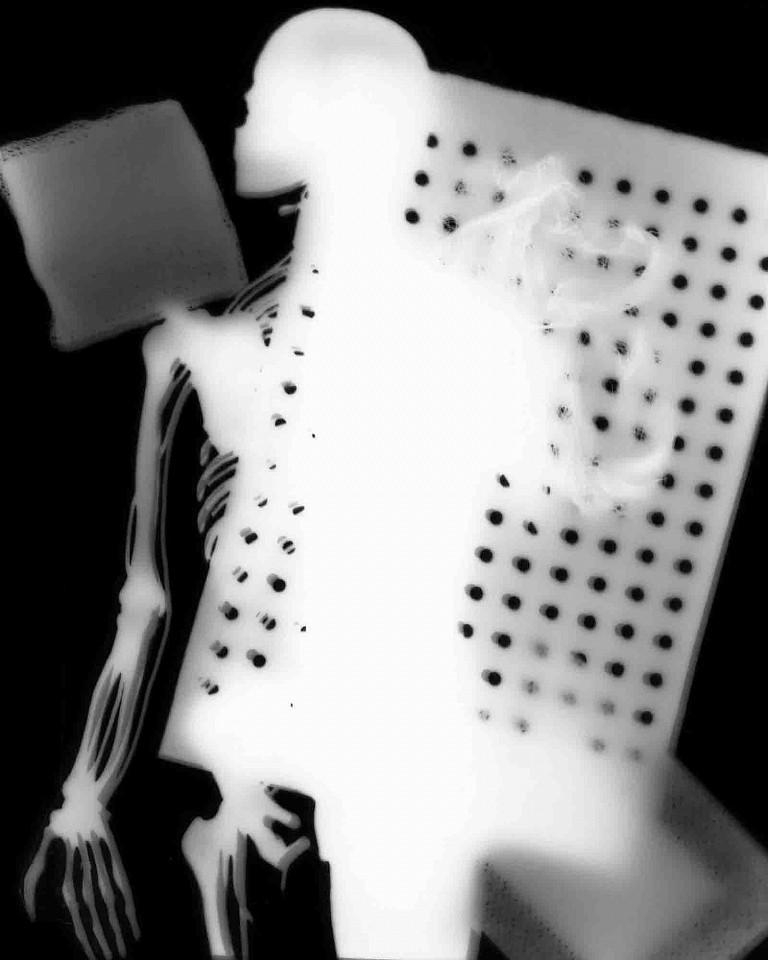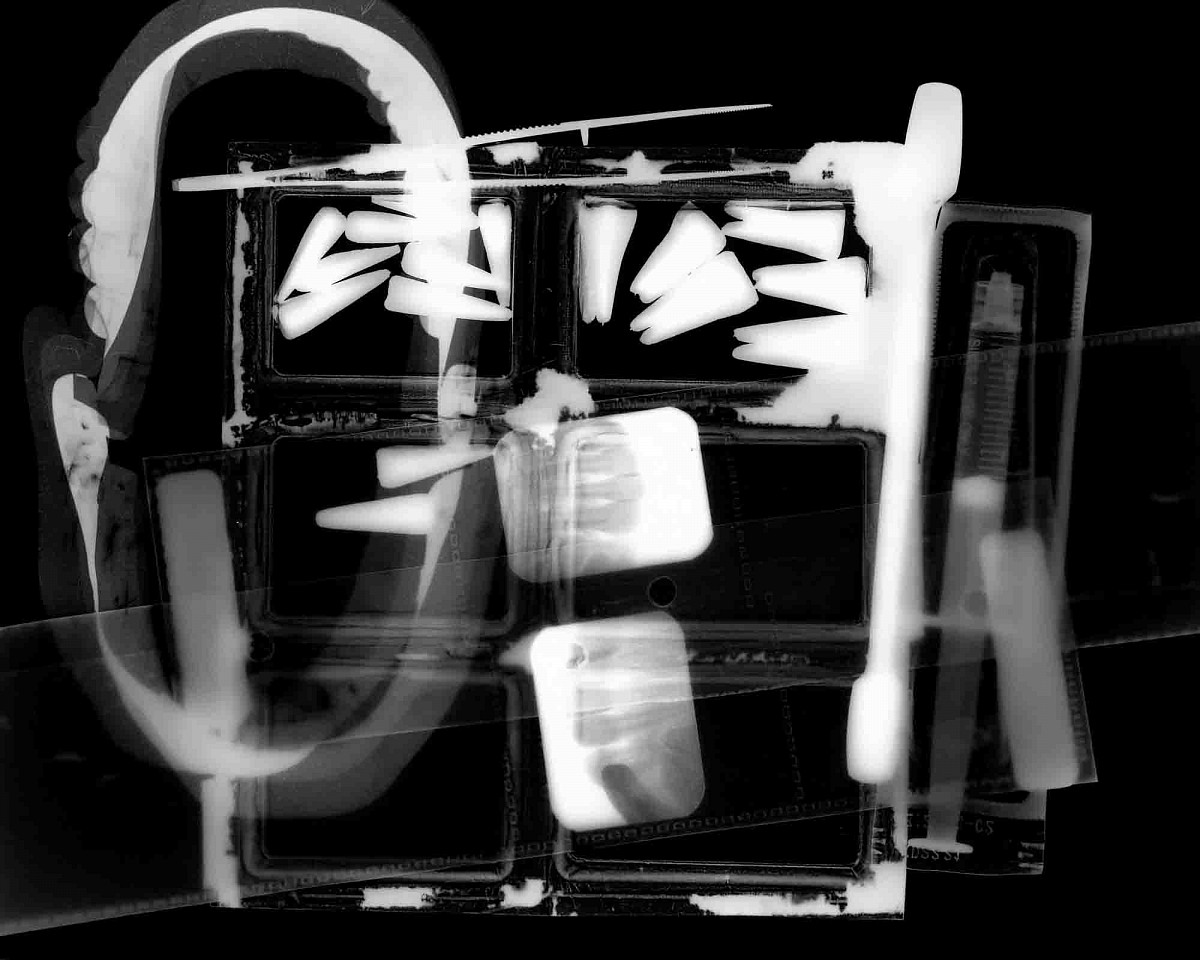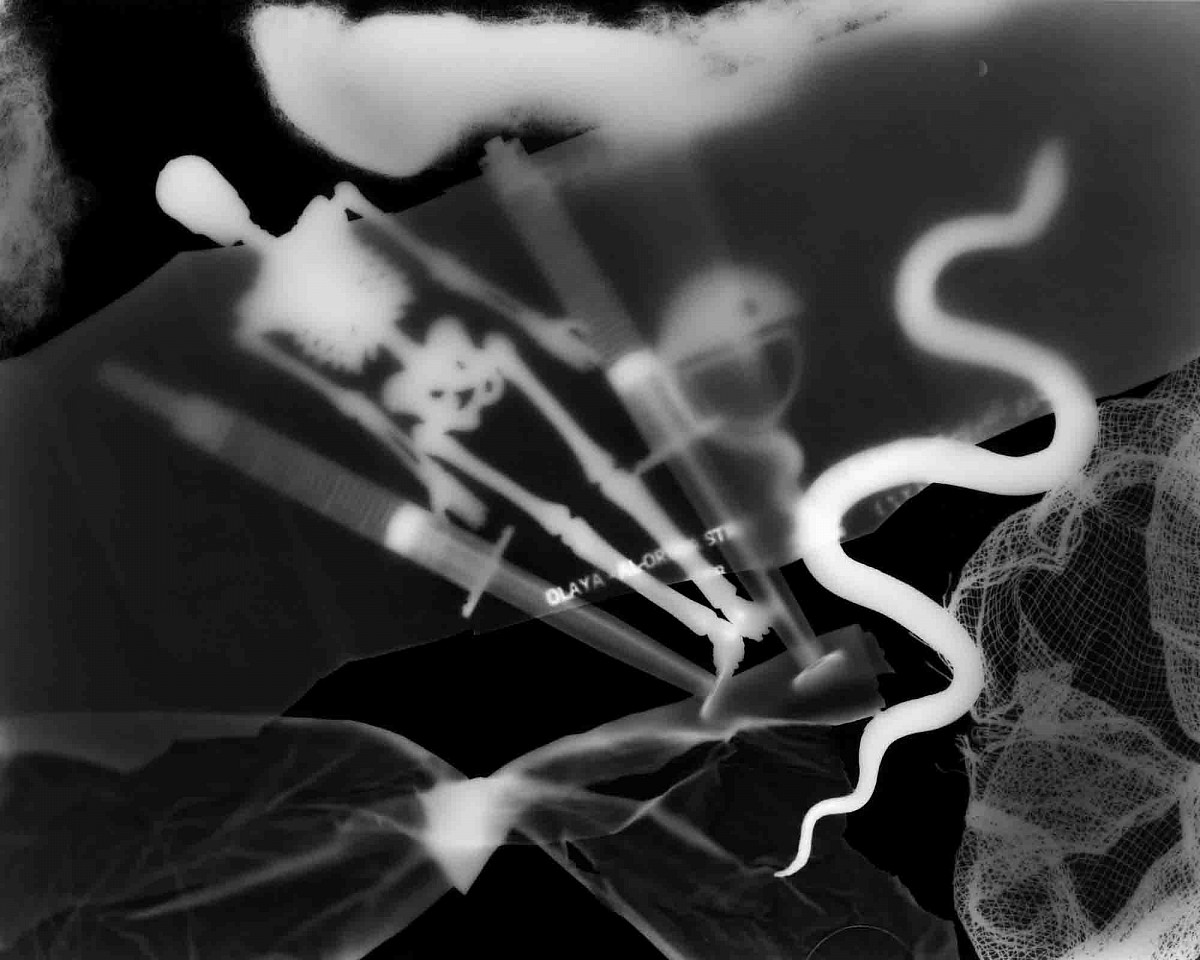Ayman Yossri Daydban
Reclining Flag, 2012
Steel
77 x 51 x 130 cm (30 3/8 x 20 1/8 x 51 1/8 in.)
From Flag series
AYD0457
Ayman Yossri Daydban
Balfour Declaration, 2011
100% Cotton Acid Free Paper
77 x 56 cm (30 3/8 x 22 in.)
AYD0428
Nasser Al Salem
All Upon Earth Will Perish, 2013
Silkscreen on paper
100 x 130 cm (39 3/8 x 51 1/8 in.)
Edition of 5 + 2 AP
NAS0121
Nasser Al Salem
Guide Us Upon The Straight Path, 2013
Natural Ink on Paper
75 x 120 cm (29 1/2 x 47 1/4 in.)
Edition: 5 + 1 AP, Acquired by LACMA, United States
NAS0116
Nasser Al Salem
Guide Us Upon The Straight Path, 2013
Video
Running time: 15 seconds
Edition: 5 + 1 AP
NAS0111
Saddek Wasil
Pipe Dreams 3, 2012
Metallic Sculpture
37 x 103 x 47 cm (14 5/8 x 40 1/2 x 18 1/2 in.)
Pipe Dreams Series
SAW0102
Saddek Wasil
Muffler I, 2013
Metallic Sculpture
185 x 175 x 78 cm (72 7/8 x 68 7/8 x 30 3/4 in.)
SAW0112
Saddek Wasil
Muffler II, 2013
Metallic Sculpture
184 x 125 x 70 cm (72 1/2 x 49 1/4 x 27 1/2 in.)
SAW0113
Ahmed Mater
Illuminations (diptyk), 2012
Gold Leaf, Tea, Pomegranate, Dupont Chinese ink & offset X-Ray film print on paper
152 x 102 cm (59 7/8 x 40 1/8 in.)
AHM0064
Ahmed Mater
Golden Hour, 2011
Fineart Latex printer and matt 200g unbleached printing paper
245 x 326.5 cm (96 1/2 x 128 1/2 in.)
Edition of 3; From Desert of Pharan series
AHM0017
Ahmed Mater
Stand in the Pathway and See, 2012
Laserchrome print on KODAK real photopaper
180 x 140 cm (70 7/8 x 55 1/8 in.)
Edition of 5; From Desert of Pharan series
AHM0048
Ahmed Mater
Abraaj Al Bait Tower, 2012
Laserchrome print on KODAK real photopaper
140 x 200 cm (55 1/8 x 78 3/4 in.)
Edition of 5; From Desert of Pharan series
AHM0023
Ahmed Mater
Al Mansur District, 2012
Laserchrome print on KODAK real photopaper
140 x 200 cm (55 1/8 x 78 3/4 in.)
Edition of 5; From Desert of Pharan series
AHM0033
Ahmed Mater
The Courtyard of Paradise, 2012
Laserchrome print on KODAK real photopaper
140 x 200 cm (55 1/8 x 78 3/4 in.)
Edition of 5; From Desert of Pharan series
AHM0028
Ahmed Mater
Social Fabric, 2012
Laserchrome print on KODAK real photopaper
140 x 200 cm (55 1/8 x 78 3/4 in.)
Edition of 5; From Desert of Pharan series
AHM0038
Ahmed Mater
Artificial Light, 2011
Fineart Latex printer and matt 200g unbleached printing paper
245 x 342.5 cm (96 1/2 x 134 7/8 in.)
Edition of 3; From Desert of Pharan series
AHM0020
Maha Malluh
Pregnant X3, 2007
Lambda Print Mounted on Forex
20 x 25 cm (7 7/8 x 9 7/8 in.)
From Capturing Light series, Edition of 10
MM0154
Maha Malluh
Rhumotology, 2007
Lambda Print Mounted on Forex
20 x 25 cm (7 7/8 x 9 7/8 in.)
From Capturing Light series, Edition of 10
MM0161
Maha Malluh
Extractions, 2007
Lambda Print Mounted on Forex
20 x 25 cm (7 7/8 x 9 7/8 in.)
From Capturing Light series, Edition of 10
MM0136
Maha Malluh
RX, 2007
Lambda Print Mounted on Forex
20 x 25 cm (7 7/8 x 9 7/8 in.)
From Capturing Light series, Edition of 10
MM0173
Maha Malluh
Dental Rules, 2007
Lambda Print Mounted on Forex
20 x 25 cm (7 7/8 x 9 7/8 in.)
From Capturing Light series, Edition of 10
MM0130
















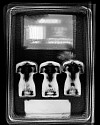
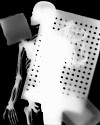

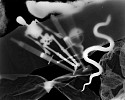
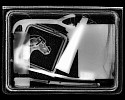
The lifeline of history is like the lifeline of a river – there is one central artery and thousands of other tributaries, some as thin as hair, branching every which way. The stories of history, like the stories borne by rivers, run as much in the central gushing aorta as in the branching veins, but the official records of history, the narratives that are passed on to posterity, often record only the primary narrative and gloss over the others. Sometimes, the artist has to step in as an alternative historian, and fill up these cracks in truth, cementing the fissures with missing links and pieces, and taking on roles as varied as scribe, chronicler, documentarian or the collective conscience of a people in a certain time and place.
At this point in time, Saudi Arabia is a node of such rapid change that it often baffles comprehension. A taste for secrecy and for avoiding its own truths often frustrates even the best-hearted attempts at documentation. Any man who leaps into the fray to challenge or truthfully complement the overlooked pockets of truth must be credited with courage. In ‘Artificial light’, the artist documents what he calls ‘an unofficial history of the urbanization of Makkah’. While Makkah’s shape, its scope and future change beyond recognition in a central sphere of development where the old and new symbol (the Kaa’ba and the Makkah Clock Tower’) confront each other directly, the shockwaves from this heated centre of conflict spread well into the fringes, into the houses, hearts and minds of the millions that absorb and live this irreversible change from the inside out. The transformation of Makkah is mapped upon their hearts and minds, their daily thoughts, in the way they have thought and will continue to think about their lives, in the way they evaluate and assess their past and in the way they project and plan their future. Their destinies and those of the city are inseparable. In this project, among other things, the artist takes it upon himself to collect these tertiary narratives in the form of audio and video documentaries. For the half-blind of the world, who will not seek beyond the truth of a google search, the narrative of the urbanization of Makkah is a narrative of concrete, but for the spiritually awake and the morally courageous, any narrative of change and transformation is read through stories of humans, not through the weight of concrete and the height of towers. It always has and perhaps, always will be, the moral responsibility of the artist to resurrect the human underbelly of this narrative of concrete and keep it from being buried under the rubble and forgotten from memory.
In the mind of the world, Makkah is a symbol more than a city, and like all symbols, an image of Makkah is not just an image. It is an image which is always read and interpreted by believers and non-believers alike. Layers of meaning, homage, veneration, significance, and history have been kneaded, over timeless decades, into what is a continuous visual narrative – the real or imagined story behind the image, the surcharge of symbolism it has accumulated over the years, and the feelings it evokes in the beholder. Makkah has never been seen neutrally, it has always bathed in its own sacred halo. It has always been seen from a standpoint of emotional and religious fervor, and the visual narrative available to us uptil now has always confirmed the vantage-point of Kaaba in this tale. Kaaba has dominated the visual narrative of Makkah (indeed, the two are almost synonymous to many) - humbly, but regally owning its position as a source, as a self-assured but unassuming quiet black monarch.
The sequence of stills in ‘Artificial Light’ is the latest addition to this narrative. Instead of taking it forward along the older axis of Kaaba’s sanctity and predominance as a sacred symbol, it completely inverts the narrative - a more glamorous, gaudily clad monarch now holds court in the central arena. The trivialization of the Kaaba is, before anything, a physical jolt, an uprooting of a familiar point of focus for the vision. The actors in this new chapter are automatons, electronic limbs of giant-sized machines, superimposing construction grids, and contractual labourers, and the sovereign is, the pictures seem to suggest, the new high rise, doubtless an ode to man’s will to compete and command. As our familiar associations with the Kaaba are shattered, we become alienated from the meaning of Kaaba. We see a Kaaba looking almost done in by the menacing limbs of construction machines, no longer secure about being the natural or only focus. Other pictures are taken from sly perspectives that posit the Kaaba within more consumerist and materialist contexts, forcing us to rethink and re-evaluate its meaning, replacing the comfortable full-stops in our mind with question marks.
The truth is that for Saudi Arabia and Saudis, Makkah is not an extraneous symbol separate from themselves, it is a part of their national and individual ethos. It is the existential denominator of their being and existence. How will the revamped Makkah affect their sense of self and worth? Will it make them disoriented? How culturally appropriate is the glamorous new tower? For the Saudis, is it a broche or an eyesore? To what extent can they identify with it? Does it repel them or are they indifferent to it?
The questions are endless. They all must be answered, but first, they must be faced. In times of change like the ones we live in, art ceases to mean beauty, it means tact, nerve, and the courage to grapple with winds of change. The artist, in these times, is a shower of mirrors. Sometimes, art could simply mean arranging mirrors in such a manner that different views of the same reality face us wherever we turn, and the full picture of truth is sealed from different angles, so that we are trapped with the most burning questions of our beings and surroundings with no way to escape. The changing face of our present is a burning question, for our future depends on it.
- Naima Rashid
The lifeline of history is like the lifeline of a river – there is one central artery and thousands of other tributaries, some as thin as hair, branching every which way. The stories of history, like the stories borne by rivers, run as much in the central gushing aorta as in the branching veins, but the official records of history, the narratives that are passed on to posterity, often record only the primary narrative and gloss over the others. Sometimes, the artist has to step in as an alternative historian, and fill up these cracks in truth, cementing the fissures with missing links and pieces, and taking on roles as varied as scribe, chronicler, documentarian or the collective conscience of a people in a certain time and place.
At this point in time, Saudi Arabia is a node of such rapid change that it often baffles comprehension. A taste for secrecy and for avoiding its own truths often frustrates even the best-hearted attempts at documentation. Any man who leaps into the fray to challenge or truthfully complement the overlooked pockets of truth must be credited with courage. In ‘Artificial light’, the artist documents what he calls ‘an unofficial history of the urbanization of Makkah’. While Makkah’s shape, its scope and future change beyond recognition in a central sphere of development where the old and new symbol (the Kaa’ba and the Makkah Clock Tower’) confront each other directly, the shockwaves from this heated centre of conflict spread well into the fringes, into the houses, hearts and minds of the millions that absorb and live this irreversible change from the inside out. The transformation of Makkah is mapped upon their hearts and minds, their daily thoughts, in the way they have thought and will continue to think about their lives, in the way they evaluate and assess their past and in the way they project and plan their future. Their destinies and those of the city are inseparable. In this project, among other things, the artist takes it upon himself to collect these tertiary narratives in the form of audio and video documentaries. For the half-blind of the world, who will not seek beyond the truth of a google search, the narrative of the urbanization of Makkah is a narrative of concrete, but for the spiritually awake and the morally courageous, any narrative of change and transformation is read through stories of humans, not through the weight of concrete and the height of towers. It always has and perhaps, always will be, the moral responsibility of the artist to resurrect the human underbelly of this narrative of concrete and keep it from being buried under the rubble and forgotten from memory.
In the mind of the world, Makkah is a symbol more than a city, and like all symbols, an image of Makkah is not just an image. It is an image which is always read and interpreted by believers and non-believers alike. Layers of meaning, homage, veneration, significance, and history have been kneaded, over timeless decades, into what is a continuous visual narrative – the real or imagined story behind the image, the surcharge of symbolism it has accumulated over the years, and the feelings it evokes in the beholder. Makkah has never been seen neutrally, it has always bathed in its own sacred halo. It has always been seen from a standpoint of emotional and religious fervor, and the visual narrative available to us uptil now has always confirmed the vantage-point of Kaaba in this tale. Kaaba has dominated the visual narrative of Makkah (indeed, the two are almost synonymous to many) - humbly, but regally owning its position as a source, as a self-assured but unassuming quiet black monarch.
The sequence of stills in ‘Artificial Light’ is the latest addition to this narrative. Instead of taking it forward along the older axis of Kaaba’s sanctity and predominance as a sacred symbol, it completely inverts the narrative - a more glamorous, gaudily clad monarch now holds court in the central arena. The trivialization of the Kaaba is, before anything, a physical jolt, an uprooting of a familiar point of focus for the vision. The actors in this new chapter are automatons, electronic limbs of giant-sized machines, superimposing construction grids, and contractual labourers, and the sovereign is, the pictures seem to suggest, the new high rise, doubtless an ode to man’s will to compete and command. As our familiar associations with the Kaaba are shattered, we become alienated from the meaning of Kaaba. We see a Kaaba looking almost done in by the menacing limbs of construction machines, no longer secure about being the natural or only focus. Other pictures are taken from sly perspectives that posit the Kaaba within more consumerist and materialist contexts, forcing us to rethink and re-evaluate its meaning, replacing the comfortable full-stops in our mind with question marks.
The truth is that for Saudi Arabia and Saudis, Makkah is not an extraneous symbol separate from themselves, it is a part of their national and individual ethos. It is the existential denominator of their being and existence. How will the revamped Makkah affect their sense of self and worth? Will it make them disoriented? How culturally appropriate is the glamorous new tower? For the Saudis, is it a broche or an eyesore? To what extent can they identify with it? Does it repel them or are they indifferent to it?
The questions are endless. They all must be answered, but first, they must be faced. In times of change like the ones we live in, art ceases to mean beauty, it means tact, nerve, and the courage to grapple with winds of change. The artist, in these times, is a shower of mirrors. Sometimes, art could simply mean arranging mirrors in such a manner that different views of the same reality face us wherever we turn, and the full picture of truth is sealed from different angles, so that we are trapped with the most burning questions of our beings and surroundings with no way to escape. The changing face of our present is a burning question, for our future depends on it.
-Naima Rashid
The lifeline of history is like the lifeline of a river – there is one central artery and thousands of other tributaries, some as thin as hair, branching every which way. The stories of history, like the stories borne by rivers, run as much in the central gushing aorta as in the branching veins, but the official records of history, the narratives that are passed on to posterity, often record only the primary narrative and gloss over the others. Sometimes, the artist has to step in as an alternative historian, and fill up these cracks in truth, cementing the fissures with missing links and pieces, and taking on roles as varied as scribe, chronicler, documentarian or the collective conscience of a people in a certain time and place.
At this point in time, Saudi Arabia is a node of such rapid change that it often baffles comprehension. A taste for secrecy and for avoiding its own truths often frustrates even the best-hearted attempts at documentation. Any man who leaps into the fray to challenge or truthfully complement the overlooked pockets of truth must be credited with courage. In ‘Artificial light’, the artist documents what he calls ‘an unofficial history of the urbanization of Makkah’. While Makkah’s shape, its scope and future change beyond recognition in a central sphere of development where the old and new symbol (the Kaa’ba and the Makkah Clock Tower’) confront each other directly, the shockwaves from this heated centre of conflict spread well into the fringes, into the houses, hearts and minds of the millions that absorb and live this irreversible change from the inside out. The transformation of Makkah is mapped upon their hearts and minds, their daily thoughts, in the way they have thought and will continue to think about their lives, in the way they evaluate and assess their past and in the way they project and plan their future. Their destinies and those of the city are inseparable. In this project, among other things, the artist takes it upon himself to collect these tertiary narratives in the form of audio and video documentaries. For the half-blind of the world, who will not seek beyond the truth of a google search, the narrative of the urbanization of Makkah is a narrative of concrete, but for the spiritually awake and the morally courageous, any narrative of change and transformation is read through stories of humans, not through the weight of concrete and the height of towers. It always has and perhaps, always will be, the moral responsibility of the artist to resurrect the human underbelly of this narrative of concrete and keep it from being buried under the rubble and forgotten from memory.
In the mind of the world, Makkah is a symbol more than a city, and like all symbols, an image of Makkah is not just an image. It is an image which is always read and interpreted by believers and non-believers alike. Layers of meaning, homage, veneration, significance, and history have been kneaded, over timeless decades, into what is a continuous visual narrative – the real or imagined story behind the image, the surcharge of symbolism it has accumulated over the years, and the feelings it evokes in the beholder. Makkah has never been seen neutrally, it has always bathed in its own sacred halo. It has always been seen from a standpoint of emotional and religious fervor, and the visual narrative available to us uptil now has always confirmed the vantage-point of Kaaba in this tale. Kaaba has dominated the visual narrative of Makkah (indeed, the two are almost synonymous to many) - humbly, but regally owning its position as a source, as a self-assured but unassuming quiet black monarch.
The sequence of stills in ‘Artificial Light’ is the latest addition to this narrative. Instead of taking it forward along the older axis of Kaaba’s sanctity and predominance as a sacred symbol, it completely inverts the narrative - a more glamorous, gaudily clad monarch now holds court in the central arena. The trivialization of the Kaaba is, before anything, a physical jolt, an uprooting of a familiar point of focus for the vision. The actors in this new chapter are automatons, electronic limbs of giant-sized machines, superimposing construction grids, and contractual labourers, and the sovereign is, the pictures seem to suggest, the new high rise, doubtless an ode to man’s will to compete and command. As our familiar associations with the Kaaba are shattered, we become alienated from the meaning of Kaaba. We see a Kaaba looking almost done in by the menacing limbs of construction machines, no longer secure about being the natural or only focus. Other pictures are taken from sly perspectives that posit the Kaaba within more consumerist and materialist contexts, forcing us to rethink and re-evaluate its meaning, replacing the comfortable full-stops in our mind with question marks.
The truth is that for Saudi Arabia and Saudis, Makkah is not an extraneous symbol separate from themselves, it is a part of their national and individual ethos. It is the existential denominator of their being and existence. How will the revamped Makkah affect their sense of self and worth? Will it make them disoriented? How culturally appropriate is the glamorous new tower? For the Saudis, is it a broche or an eyesore? To what extent can they identify with it? Does it repel them or are they indifferent to it?
The questions are endless. They all must be answered, but first, they must be faced. In times of change like the ones we live in, art ceases to mean beauty, it means tact, nerve, and the courage to grapple with winds of change. The artist, in these times, is a shower of mirrors. Sometimes, art could simply mean arranging mirrors in such a manner that different views of the same reality face us wherever we turn, and the full picture of truth is sealed from different angles, so that we are trapped with the most burning questions of our beings and surroundings with no way to escape. The changing face of our present is a burning question, for our future depends on it.
-Naima Rashid
The lifeline of history is like the lifeline of a river – there is one central artery and thousands of other tributaries, some as thin as hair, branching every which way. The stories of history, like the stories borne by rivers, run as much in the central gushing aorta as in the branching veins, but the official records of history, the narratives that are passed on to posterity, often record only the primary narrative and gloss over the others. Sometimes, the artist has to step in as an alternative historian, and fill up these cracks in truth, cementing the fissures with missing links and pieces, and taking on roles as varied as scribe, chronicler, documentarian or the collective conscience of a people in a certain time and place.
At this point in time, Saudi Arabia is a node of such rapid change that it often baffles comprehension. A taste for secrecy and for avoiding its own truths often frustrates even the best-hearted attempts at documentation. Any man who leaps into the fray to challenge or truthfully complement the overlooked pockets of truth must be credited with courage. In ‘Artificial light’, the artist documents what he calls ‘an unofficial history of the urbanization of Makkah’. While Makkah’s shape, its scope and future change beyond recognition in a central sphere of development where the old and new symbol (the Kaa’ba and the Makkah Clock Tower’) confront each other directly, the shockwaves from this heated centre of conflict spread well into the fringes, into the houses, hearts and minds of the millions that absorb and live this irreversible change from the inside out. The transformation of Makkah is mapped upon their hearts and minds, their daily thoughts, in the way they have thought and will continue to think about their lives, in the way they evaluate and assess their past and in the way they project and plan their future. Their destinies and those of the city are inseparable. In this project, among other things, the artist takes it upon himself to collect these tertiary narratives in the form of audio and video documentaries. For the half-blind of the world, who will not seek beyond the truth of a google search, the narrative of the urbanization of Makkah is a narrative of concrete, but for the spiritually awake and the morally courageous, any narrative of change and transformation is read through stories of humans, not through the weight of concrete and the height of towers. It always has and perhaps, always will be, the moral responsibility of the artist to resurrect the human underbelly of this narrative of concrete and keep it from being buried under the rubble and forgotten from memory.
In the mind of the world, Makkah is a symbol more than a city, and like all symbols, an image of Makkah is not just an image. It is an image which is always read and interpreted by believers and non-believers alike. Layers of meaning, homage, veneration, significance, and history have been kneaded, over timeless decades, into what is a continuous visual narrative – the real or imagined story behind the image, the surcharge of symbolism it has accumulated over the years, and the feelings it evokes in the beholder. Makkah has never been seen neutrally, it has always bathed in its own sacred halo. It has always been seen from a standpoint of emotional and religious fervor, and the visual narrative available to us uptil now has always confirmed the vantage-point of Kaaba in this tale. Kaaba has dominated the visual narrative of Makkah (indeed, the two are almost synonymous to many) - humbly, but regally owning its position as a source, as a self-assured but unassuming quiet black monarch.
The sequence of stills in ‘Artificial Light’ is the latest addition to this narrative. Instead of taking it forward along the older axis of Kaaba’s sanctity and predominance as a sacred symbol, it completely inverts the narrative - a more glamorous, gaudily clad monarch now holds court in the central arena. The trivialization of the Kaaba is, before anything, a physical jolt, an uprooting of a familiar point of focus for the vision. The actors in this new chapter are automatons, electronic limbs of giant-sized machines, superimposing construction grids, and contractual labourers, and the sovereign is, the pictures seem to suggest, the new high rise, doubtless an ode to man’s will to compete and command. As our familiar associations with the Kaaba are shattered, we become alienated from the meaning of Kaaba. We see a Kaaba looking almost done in by the menacing limbs of construction machines, no longer secure about being the natural or only focus. Other pictures are taken from sly perspectives that posit the Kaaba within more consumerist and materialist contexts, forcing us to rethink and re-evaluate its meaning, replacing the comfortable full-stops in our mind with question marks.
The truth is that for Saudi Arabia and Saudis, Makkah is not an extraneous symbol separate from themselves, it is a part of their national and individual ethos. It is the existential denominator of their being and existence. How will the revamped Makkah affect their sense of self and worth? Will it make them disoriented? How culturally appropriate is the glamorous new tower? For the Saudis, is it a broche or an eyesore? To what extent can they identify with it? Does it repel them or are they indifferent to it?
The questions are endless. They all must be answered, but first, they must be faced. In times of change like the ones we live in, art ceases to mean beauty, it means tact, nerve, and the courage to grapple with winds of change. The artist, in these times, is a shower of mirrors. Sometimes, art could simply mean arranging mirrors in such a manner that different views of the same reality face us wherever we turn, and the full picture of truth is sealed from different angles, so that we are trapped with the most burning questions of our beings and surroundings with no way to escape. The changing face of our present is a burning question, for our future depends on it.
-Naima Rashid
The lifeline of history is like the lifeline of a river – there is one central artery and thousands of other tributaries, some as thin as hair, branching every which way. The stories of history, like the stories borne by rivers, run as much in the central gushing aorta as in the branching veins, but the official records of history, the narratives that are passed on to posterity, often record only the primary narrative and gloss over the others. Sometimes, the artist has to step in as an alternative historian, and fill up these cracks in truth, cementing the fissures with missing links and pieces, and taking on roles as varied as scribe, chronicler, documentarian or the collective conscience of a people in a certain time and place.
At this point in time, Saudi Arabia is a node of such rapid change that it often baffles comprehension. A taste for secrecy and for avoiding its own truths often frustrates even the best-hearted attempts at documentation. Any man who leaps into the fray to challenge or truthfully complement the overlooked pockets of truth must be credited with courage. In ‘Artificial light’, the artist documents what he calls ‘an unofficial history of the urbanization of Makkah’. While Makkah’s shape, its scope and future change beyond recognition in a central sphere of development where the old and new symbol (the Kaa’ba and the Makkah Clock Tower’) confront each other directly, the shockwaves from this heated centre of conflict spread well into the fringes, into the houses, hearts and minds of the millions that absorb and live this irreversible change from the inside out. The transformation of Makkah is mapped upon their hearts and minds, their daily thoughts, in the way they have thought and will continue to think about their lives, in the way they evaluate and assess their past and in the way they project and plan their future. Their destinies and those of the city are inseparable. In this project, among other things, the artist takes it upon himself to collect these tertiary narratives in the form of audio and video documentaries. For the half-blind of the world, who will not seek beyond the truth of a google search, the narrative of the urbanization of Makkah is a narrative of concrete, but for the spiritually awake and the morally courageous, any narrative of change and transformation is read through stories of humans, not through the weight of concrete and the height of towers. It always has and perhaps, always will be, the moral responsibility of the artist to resurrect the human underbelly of this narrative of concrete and keep it from being buried under the rubble and forgotten from memory.
In the mind of the world, Makkah is a symbol more than a city, and like all symbols, an image of Makkah is not just an image. It is an image which is always read and interpreted by believers and non-believers alike. Layers of meaning, homage, veneration, significance, and history have been kneaded, over timeless decades, into what is a continuous visual narrative – the real or imagined story behind the image, the surcharge of symbolism it has accumulated over the years, and the feelings it evokes in the beholder. Makkah has never been seen neutrally, it has always bathed in its own sacred halo. It has always been seen from a standpoint of emotional and religious fervor, and the visual narrative available to us uptil now has always confirmed the vantage-point of Kaaba in this tale. Kaaba has dominated the visual narrative of Makkah (indeed, the two are almost synonymous to many) - humbly, but regally owning its position as a source, as a self-assured but unassuming quiet black monarch.
The sequence of stills in ‘Artificial Light’ is the latest addition to this narrative. Instead of taking it forward along the older axis of Kaaba’s sanctity and predominance as a sacred symbol, it completely inverts the narrative - a more glamorous, gaudily clad monarch now holds court in the central arena. The trivialization of the Kaaba is, before anything, a physical jolt, an uprooting of a familiar point of focus for the vision. The actors in this new chapter are automatons, electronic limbs of giant-sized machines, superimposing construction grids, and contractual labourers, and the sovereign is, the pictures seem to suggest, the new high rise, doubtless an ode to man’s will to compete and command. As our familiar associations with the Kaaba are shattered, we become alienated from the meaning of Kaaba. We see a Kaaba looking almost done in by the menacing limbs of construction machines, no longer secure about being the natural or only focus. Other pictures are taken from sly perspectives that posit the Kaaba within more consumerist and materialist contexts, forcing us to rethink and re-evaluate its meaning, replacing the comfortable full-stops in our mind with question marks.
The truth is that for Saudi Arabia and Saudis, Makkah is not an extraneous symbol separate from themselves, it is a part of their national and individual ethos. It is the existential denominator of their being and existence. How will the revamped Makkah affect their sense of self and worth? Will it make them disoriented? How culturally appropriate is the glamorous new tower? For the Saudis, is it a broche or an eyesore? To what extent can they identify with it? Does it repel them or are they indifferent to it?
The questions are endless. They all must be answered, but first, they must be faced. In times of change like the ones we live in, art ceases to mean beauty, it means tact, nerve, and the courage to grapple with winds of change. The artist, in these times, is a shower of mirrors. Sometimes, art could simply mean arranging mirrors in such a manner that different views of the same reality face us wherever we turn, and the full picture of truth is sealed from different angles, so that we are trapped with the most burning questions of our beings and surroundings with no way to escape. The changing face of our present is a burning question, for our future depends on it.
-Naima Rashid
Twisted metallic sculptures, monumental public installations, compelling art and bold ideas - Jeddah’s Athr Art Gallery are returning to Dubai for Art Week 2013 with their most significant engagement with the city’s annual celebration of Middle Eastern and international art to date.
Renowned for their panoramic approach to supporting and highlighting artists from not only Saudi Arabia but across the Middle East in a multitude of global exhibitions, projects and collaborations, Athr Gallery’s increasing global profile has rocketed in recent months.
Participating in the gallery’s booth in Art Dubai are Ayman Yossri Daydban, Hazem Harb, Ahmed Mater, Nasser Al Salem, Sami Al Turki and Saddek Wasil.
Ayman Yossri Daydban’s work was recently shown at Art Berlin Contemporary, to widespread critical acclaim. In his ‘Subtitles Concept’ and ‘Flag Concept’ projects at Art Dubai, the Palestinian-born Jordanian/Saudi Arabian artist grapples with issues relating to identity and national histories. Palestinian-born performance and installation artist Hazem Harb is currently in the ascendant, following a successful appearance at London’s Art13 fair earlier this March. At Art Dubai, he is showing work from his ‘Beyond Memory Concept’, which uses the Israeli separation wall in occupied Palestine as a powerful metaphor for human isolation and endurance.
Ahmed Mater, now represented by Athr Art Gallery, will be making a significant contribution to the UAE’s Art Week program. As well as showing work at the Sharjah Biennial, Mater will be at Art Dubai with further excerpts from his ongoing photographic project Artificial Light/‘Desert Of Pharan. A major work which has already been acclaimed for its depth and sensitivity Artificial Light/‘Desert Of Pharan is a richly textured contemplation on the modes of social and economic evolution currently driving change in Mecca. In addition to this series, Mater will also be showing work from his internationally acclaimed ‘Illuminations Concept’ series.
Meccan artist, Nasser al Salem is showing a range of pieces that reference his background in architecture and fascination with calligraphy, blending elements of these two disciplines with powerful effect. Al Salem is one of the artist shortlisted for the Victoria and Albert Museum Jameel Prize.
Sami al Turki’s selection of photographic works highlights the ongoing progress of this exciting and talented artist. At Art Dubai, Sami Al Turki will show images from ‘Bazarkh Concept’, in which a wry yet piercing eye is cast over the artist’s experiences of finding a physical and emotional need for a home, works which echo with opposite poignancy, the title of the series - ‘Barzakh’, translating as ‘a state of in-between, neither here nor there’.

